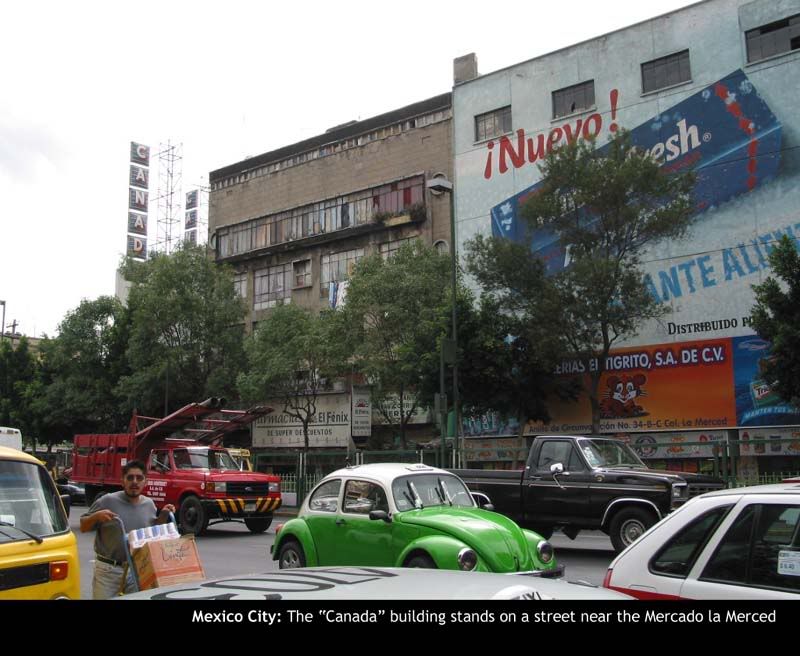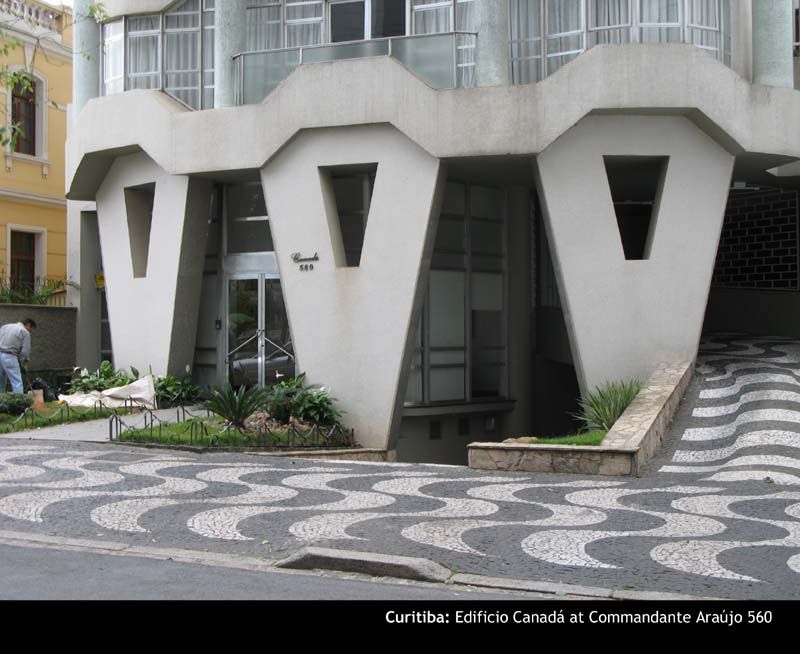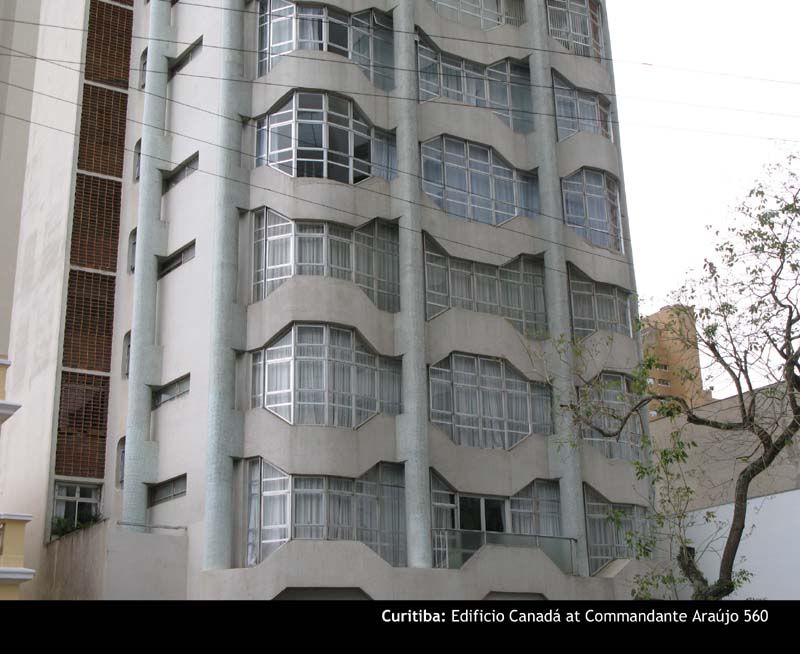Nicely said, Tewder - je ne sais quois and all. You emphasize how we're defined by what we do rather than by PeeEnd and Archivist's lame posting of images from other cities and challenges to define ourselves in the light of what foreigners who aren't us do. Too often we're a city of hand-wringers and deniers, and perhaps there's no better proof that Toronto Style exists than in the denial of it by such types.
And nice that lawsond has had his epiphany at 15,00 feet concerning the fundamentally collective nature of what we do.
And here's part of Alfred Holden's interview with Rodolphe el-Khoury from May 2008:
Why Toronto's got style
Toronto. Style. When describing the greater city's architecture, can the two words be used together?
Architecture professor Rodolphe el-Khoury noticed a particular look, discernible in the Toronto flotsam, when he was recruited from the United States to teach at the University of Toronto in 1999.
Fascinated, partly because locals did not seem to see what he saw, he began to deconstruct and understand it. Now as Canada Research Chair in architecture and urban design at U of T, el-Khoury is probably the most articulate voice for the idea that there is, indeed, a "Toronto style" in architecture.
Its elements, as he explained to Sunday Ideas, come from city and country, the recent and distant past, and several international movements. Notwithstanding the style's seeming invisibility, el-Khoury finds it to be fresh, often very good and popping up everywhere.
Ideas: You've suggested "there is a growing sense of a particular Toronto architecture sensibility." The person on the street is skeptical. What are you talking about?
el-Khoury: If you look at many of the new buildings – libraries, university and other institutional buildings, a surprising number of condominiums going up – I do think they share characteristics. It has to do with several factors. Most of the people who are now in the leading Toronto firms have a very similar education and also training; at one point or another, many worked with George Baird (now U of T architecture dean) or were part of Barton Myers' office (an American who practised in Toronto with Jack Diamond in the 1960s and '70s). So there is a culture that these people were part of, and that they also developed. And that translates into a formal language that you can see in the city.
How you define that formal language can be tricky. It's one of those situations where you don't know – can't really define it – but you know it when you see it. If I were to be very general, it is a particular way, particular manner in the use of materials, for instance a predilection for very tactile materials, for rough stone, textured stone, rich woods and natural materials. What's interesting is the combination of this very rustic palette with a very modern, clean, formal language. So you get the sharp geometry and outlines of modern architecture, but you get the more traditional rustic materials blended with it, and it makes for a very particular flavour.
Ideas: What are some examples of these buildings?
el-Khoury: The new Gardiner Museum; the work under way now at the Royal Conservatory of Music (both by Kuwabara, Payne, McKenna, Blumberg); the work of Brigitte Shim and Howard Sutcliffe. Have you had a chance to see the house they are working on? There's a new one under construction now, their most ambitious project yet, Integral House (for Toronto mathematician James Stewart). It has these qualities I describe, and is a very beautiful house.
Another firm doing the work I'm talking about is Hariri Pontarini. Their McKinsey & Company building (business consultants at 110 Charles St. W.) is a very good example, taking modernist geometry but very ornate materials.
One thing that is significant is that these architects are using the same craftsmen. The cabinetry, all the millwork for the windows, and so on, come from the same sources. All these architects are capitalizing on the same resources, which are available in the local craft community. This is another way you get a sense of common language or sensibility, because it's using the same – it's built on the same community.
Ideas: I'm thinking of that grey Owen Sound ledgerock with the beautiful patterns in it that you see around town, sometimes rough, sometimes very polished.
el-Khoury: That's right. And here's another argument to be made:
Toronto's culture has a rural foundation to it. Montreal's contemporary architecture has more cosmopolitan cultural aspirations and therefore tends to be much more strictly modern, whereas Toronto has this more nostalgic relationship to the land. You get the wood, fieldstone – there's always a reference to a rural past, to the idea of Canada as a rural land.
If you compare the high-end architecture in Montreal with the high-end architecture in Toronto, it's very different. You won't find that commitment to traditional materials in Montreal. That's the Toronto style; it's a modern architecture, it's contemporary, it's plugged into contemporary architectural trends and debates. But there's always a way to translate or recover Ontario heritage, which is a rural, rooted, land-based culture.
Ideas: When I talk about a Toronto style, people sometimes laugh, as if banality is the best we can aspire to. What is giving rise to these buildings? Who is commissioning them?
el-Khoury: The style of the Toronto school we are discussing is really a kind of high-end phenomenon. I'm talking about institutional and business buildings, and a very few houses. And it's a relatively recent phenomenon, so it's going to take awhile to enter the mainstream. Clearly what we're discussing is not evident in your average architectural project. But it is there in the high-end, high-profile projects. Those are the ones that tend to represent a city before the style or trend becomes a mainstream phenomenon. It will take a few years.
Ideas: Did the neighbourhood movements of the 1960s and 1970s, and the embrace by Toronto of Jane Jacobs' philosophy after she moved here, influence the distinct style you see?
el-Khoury: Jane Jacobs was one of the main inspirations behind the reinvestment in a user-oriented architecture, a more human scale, the finer, softer touches that define the gentler, kinder modernism of the "Toronto style." The work of Barton Myers and Jack Diamond in the 1970s is the earliest manifestation of the Toronto manner or style, and it is very much about a generosity toward the street, a sensitivity toward the neighbourhood, ideas and attitudes that echo Jacobs' critique of the cold instrumental rationality of modern urban planning.
Ideas: Where does the city's interest in star architects fit in?
el-Khoury: The (Crystal) addition to the Royal Ontario Museum was, I think, unjustly negatively received by the critical press, and actually by most people. I think it was because the building goes against the grain, against those tendencies that are reflected in the city's more traditional building stock. It's because it's so different from those, and it did not embody them.
Ideas: The Crystal doesn't speak to our rural roots?
el-Khoury: Exactly. If you go back to (architectural) reviews, they say that, in a certain way. For instance, the ROM seemed like a building not rooted – kind of a floating thing that has collided into the old structure. It doesn't touch the ground, so to speak. One critic commented on (Daniel) Libeskind, the architect, in terms that faulted his cosmopolitanism – he was an outsider who comes to Toronto and doesn't understand the local culture. Again, it's a kind of tension between a cosmopolitan international culture and a more Ontario-based kind of heritage.
Ideas: So there is this very real force here, a kind of thinking that we may not be conscious of but is very powerful.
el-Khoury: The ROM may be a good example of how people are not aware of this culture, but when something strikes a very different chord, we know it is off.
Ideas: You have said that the Toronto style is most evident to visitors, or "outsiders" like yourself. How did you come to the city and what did you see?
el-Khoury: Originally I was born in Lebanon, but my architectural education and practice is mostly American, (so) I brought mostly an American perspective to Toronto. My expectations about North-American cities were pleasantly challenged by the unusual character of Toronto. I liken Toronto's charm to the pleasure we get from wearing an old favourite shoe: not very pretty but so comfortable.
Ideas: When did you start to notice our style?
el-Khoury: I was recruited by the University of Toronto in 1999. Immediately, after my first few months here, I had the idea of doing an exhibition on this Toronto school – it wasn't called a style, but at least a school of thought. A vocabulary shared by all these architects. And I met with them and started to build this body of work.
We have yet to do the exhibition. One reason, perhaps, is my reservation about formally codifying and fixing that which is rather nebulous and fluid: a sensibility and a set a values shared by a community of architects rather than a style in the strict sense of the term. That's why the Toronto style, or manner, as I also like to call it, is hard to pin down. Maybe that's a good thing, and that's how we should leave it. It's the je ne sais quoi that gives Toronto architecture such a distinct character.








